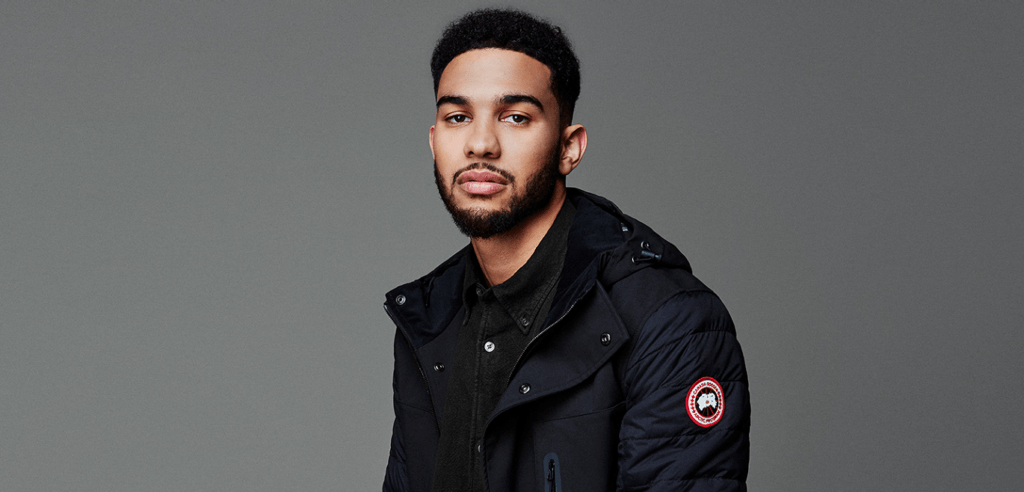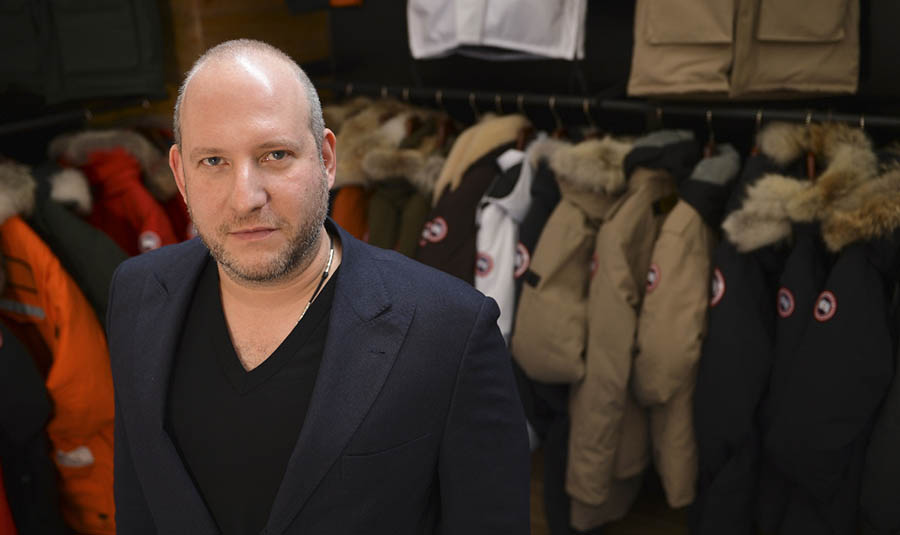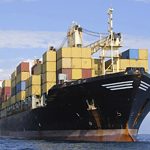By Thomas J. Ryan
<span style="color: #a1a1a1;">Canada Goose Inc. reported sales collapsed 63.3 percent in its seasonally-slow first quarter while predicting a significant decline in the second quarter and lower wholesale revenues for the full fiscal year. Continued investments in digital and retail are expected to support DTC growth.
“I have long believed that adversity demands change, drives innovation and reveals winners,” said Dani Reiss, president and CEO, on a conference call with analysts, shown above. “For Canada Goose, that has never been more true than it is today, as we begin to see signs of recovery around the world, heading into our most important seasons.”
 Among the highlights of its COVID-19 response:
Among the highlights of its COVID-19 response:
- With digital adoption rising rapidly, the company has increased and accelerated investments in these areas going into the Fall/Winter season. This includes the launch of mobile omnichannel capabilities in U.S. stores, following a successful pilot in Canada and a cross-border solution to expand international access.
- Retail investments have also been “reduced and refocused” with seven store openings now set for FY21, slightly less than the nine stores planned when it reported Q420 results. New openings this year will be concentrated in Mainland China with the first store in Chengdu performing well since opening in June. Said Reiss, “Overall, the retail recovery in Mainland China is ahead of other regions, and so serving the world’s largest luxury consumer at home has become increasingly crucial. We believe that our strategic approach to growing our Mainland China DTC business this year has us very much on the right track.”
- On an annual basis, the company expects lower wholesale revenue and later shipment timing relative to fiscal 2020 with a focus on in-season fulfillment., Wholesale, which represented 74.2 percent of sales in the second quarter of fiscal 2020, has seen shipments to partners continue to be materially lower as they restart their retail operations. A controlled and selective approach is being used in the early stages of re-opening. Said Reiss, “We made the call early in the pandemic to temporarily put our wholesale business on pause. This helped us maintain whole price integrity in what became a promotional environment for many other brands.”
- Alongside the continued production of PPE to support front line workers fighting against COVID-19, down-filled jacket manufacturing has restarted on a limited basis. With a strong finished goods position, the company is focused on adding depth for key on-trend styles in the upcoming Fall/Winter season. Canada Goose currently plans to produce roughly one-third of the fiscal 2020 output with the intention of significantly reducing inventory by the end of fiscal 2021
- Canada Goose’s liquidity and cash flow profile continue to provide extensive coverage against ongoing external uncertainties. Measures taken to reduce anticipated cash expenses and investments by $90 million in the first quarter of fiscal 2021 were fully met. Net cash used in operating activities was $110.5 million lower than the comparative quarter last year.
<span style="color: #a1a1a1;">In the quarter ended June 28, sales in Canadian dollars fell 63.3 percent to $26.1 million from $71.1 million a year ago. Excluding the $7 million in PPE sales to the Canadian government, revenue was down 73.1 percent to $19.1 million, just below Wall Street’s consensus estimate of $20.6 million.
DTC revenue tumbled 70.8 percent to $10.4 million. The decrease was driven by temporary store closures and reduced store hours due to COVID-19 global disruption. Twenty-one of 22 retail stores in the DTC channel globally are in operation. In line with seasonality, revenue generated through e-commerce was consistent with the comparative quarter.
Wholesale revenue declined 75.6 percent $8.7 million as a result of a significant reduction in shipments due to COVID-19 disruptions to partner operations.
Gross margins eroded to 18.4 percent from 57.5 percent a year ago. The decrease in gross margin was a result of lower gross margins in Wholesale and a lower proportion of DTC revenue, offset by an increase in DTC gross margin. Excluding the sale of PPE at cost and $4.3 million of net overhead costs resulting from the temporary closure of its manufacturing facilities, gross margin in the latest quarter was 47.6 percent.

DTC gross margin improved to 82.7 percent from 74.7 percent, driven by duty recovery (+1,620 bps) related to 2019 shipments to Asia partially offset favorable inventory recoveries (-680 bps) in the comparative quarter. These factors had a disproportionate impact given the low level of revenue in the quarter.
Wholesale gross margin declined to 17.2 percent from 41.9 percent. The decrease was attributable to a higher proportion of distributor sales (-990 bps) and favorable inventory recoveries in the comparative quarter ((-1,730 bps). These factors had a disproportionate impact given the low level of revenue in the quarter.
Total SG&A expenses decreased 15.5 percent in total but grew to 186.2 percent of revenues from 80.9 percent a year ago. The net operating loss doubled to $59.3 million from $27.5 million a year ago. Adjusted EBIT was a loss of $46.5 million compared to a loss of $25.9 million.
The DTC segment’s operating loss was $12.2 million compared to an operating income of $6.5 million. The operating loss was driven by COVID-19 temporary store closures resulting in lower revenue offset by $1.2 million of government payroll subsidies, savings from variable rent and other cost-saving initiatives. COVID-19-related temporary store closure costs of $5.5 million were recognized.
<span style="color: #a1a1a1;">The Wholesale segment’s operating loss was $7.2 million versus an operating income of $5.0 million. The operating loss was attributable to the decline in revenue offset by cost reduction efforts across the business supplemented by $800,000 of government payroll subsidies.
The net loss came to $50.1 million, or 46 cents per share, compared to a loss of $29.4 million, or 27 cents, a year ago. Adjusted net loss was $38.4 million, or 35 cents per share, compared to a loss of $22.8 million, or 21 cents. Wall Street’s consensus estimate on an adjusted basis was a loss of 42 cents.
Inventories at the period’s end were $428.6 million against $366.1 million at the same time a year ago, up 117 percent.
“When it comes to manufacturing, our approach to production this year will be limited, flexible and deliberate,” said Reiss. “Specifically, we will be focusing on two areas: adding depth to our key top-performing core styles and building strategic new styles and collaborations to drive brand heat and momentum. This assortment in combination with the already healthy [indiscernible] position that we came into the year with, will enable us to build, drive and fulfill demand while drawing down our existing inventory to end the year with a lower inventory position relative to last year.”
Regarding its launch into footwear, Reiss noted that the company recently announced the appointment of Adam Meek as general manager of footwear & accessories to lead its entry.
“Adam comes to us with more than 20 years of global experience with a number of leading global brands. His entrepreneurial spirit and passion for product make him a perfect fit for Canada Goose,” said Reiss. “Now, with Baffin’s role and reputation, Paul Hubner’s decades of experience and Woody Blackford’s leadership in global product strategy, we have all the pillars in place. We’ve taken a deliberate approach to this category.”
The first expression of Canada Goose footwear is expected to be available in select markets as early as FW21 with a full commercial launch in the years to follow. Said the CEO, “I believe we have an incredible opportunity in front of us in footwear to bring a new perspective to the marketplace and to find the intersection of luxury and function in a way that’s never been done before.”
Photos courtesy Canada Goose
















